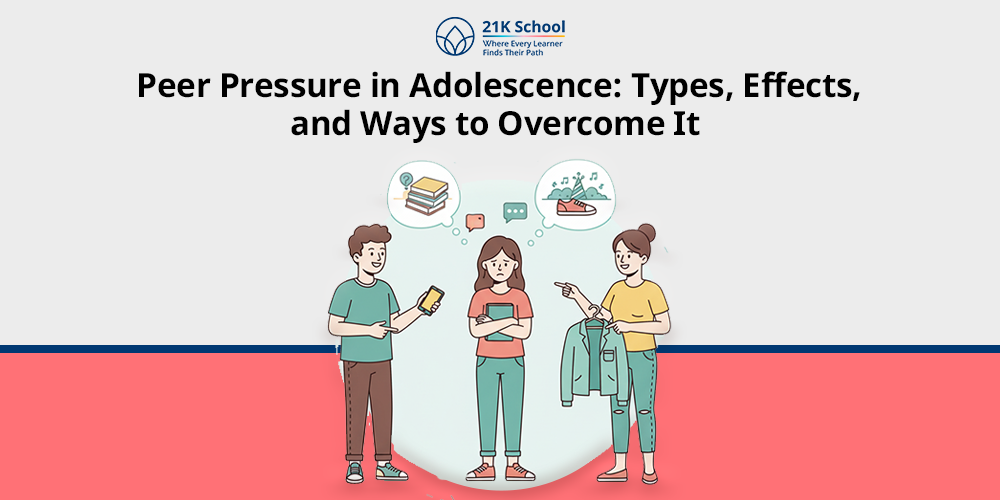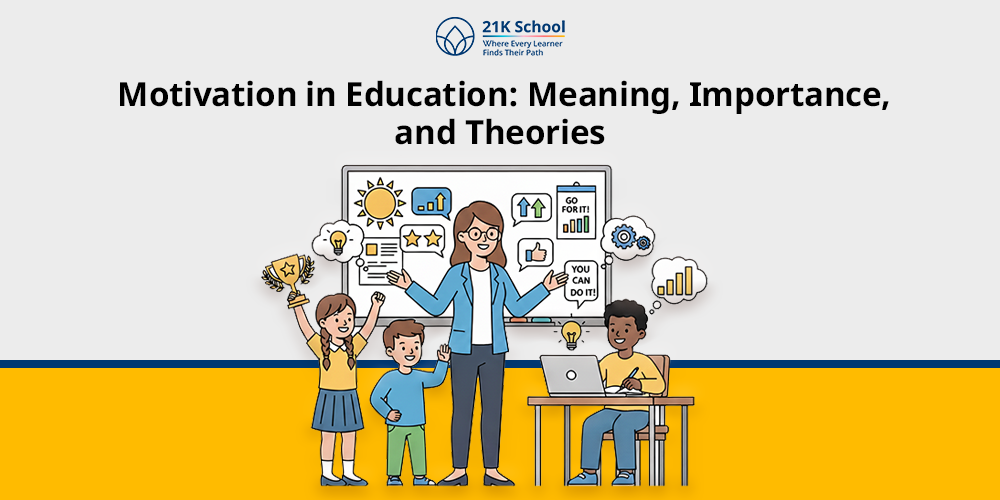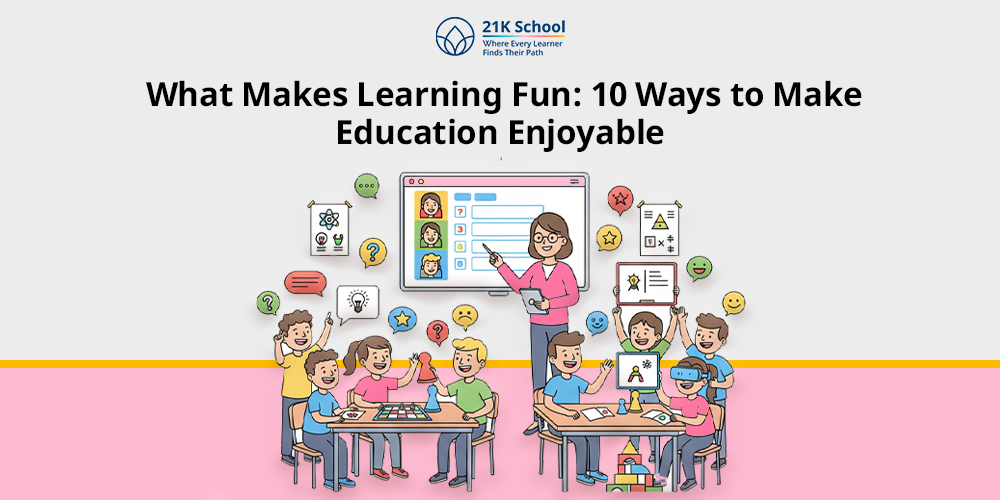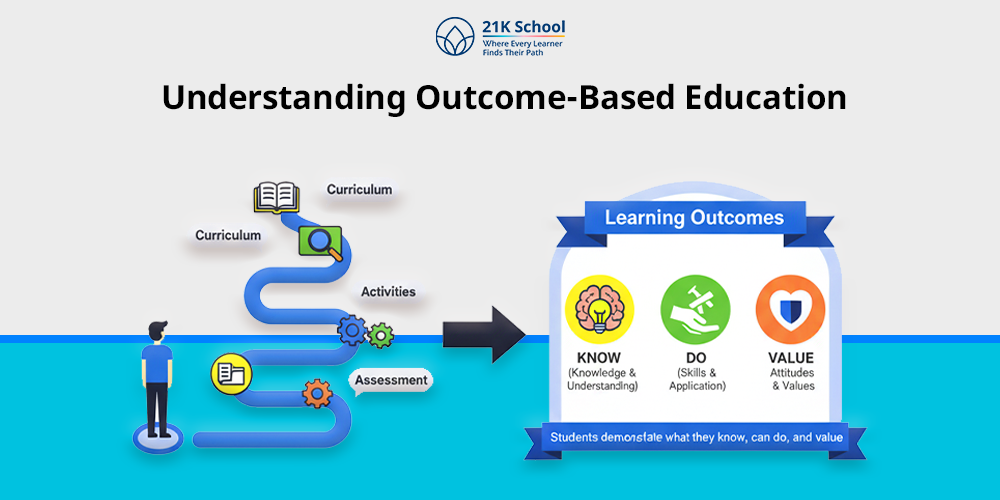
From a child to becoming an adult an individual changes in both physically and emotionally. Students explore themselves, make their own identity, and learn to fit in society.
In the educational journey students often interact with different people, make friends and get influenced by their peers. Influence based on thoughts, behavior, and decisions.
But, learners get influenced by both positive or negative which is known as “Peer Pressure”.
In adolescence, peer pressure sometimes motivates students to become academically successful while it also negatively affects such as reducing confidence.
Let’s understand peer pressure in adolescence, its types, effects, and effective ways to overcome it.
Table of Contents
What is Peer Pressure in Adolescence?
Peer pressure in adolescence means an influence by the group of peers or friends to change the thoughts, behavior, attitude and decision of an individual.
In adolescence, students are strongly connected by peers which create both positive or negative, direct or indirect personality with time.
Explore the importance of peer learning.
Types of Peer Pressure in Adolescence
Peer pressure has different types, some provide benefits and others negatively impact students’ lives. Common types of peer pressure are:
1. Direct Peer Pressure
Individuals directly asked or challenged to do something come under spoken or direct peer pressure. It showcases a clear demand or request.
For example, a friend consumes a lot of cold drinks in a day and pretends it is good for health. Or peers participating in discussion and encouraging others to gain knowledge.
2. Indirect Peer Pressure
Indirect or unspoken peer pressure means observing others’ actions without being directly or explicitly involved.
Copying others to meet the latest clothing style or what is popular in peers.
3. Negative Peer Pressure
Negative peer pressure is an unhealthy or risky behavior that creates pressure in students to implement bad habits like cheat, or break rules just to gain social approval.
This leads students towards stress, guilt,, and a loss of self-identity over time which also impact personality development and academic growth.
4. Positive Peer Pressure
Peer pressure also positively affects students which guides students to build good habits, personal growth, and moral development.
Friends motivate each other for daily exercise or asking questions from syllabus to check each other’s knowledge level.
Positive and Negative Effects of Peer Pressure in Adolescents
Understanding positive and negative peer pressure helps students to understand it’s important and how to deal with it. Given below includes both forms:
1. Positive Effects:
- Improved Academic Performance
Peer pressure in adolescence is an effective approach where surrounding students create an environment to compete with each other and win.
This helps them to perform better and encourages them to improve academic performance to achieve success. Students give tests to perform better.
- Enhanced Social Skills and Teamwork
Positive peer pressure in students’ lives enhances social skills and teamwork. Interacting with others builds communication, empathy, and cooperation.
Students can also help each other by working together as a team to achieve desired results. Group projects or team sports are some ideal examples.
- Healthy Competition and Motivation
One of the positive influences of peer pressure is conducting healthy competition and motivation in school and home.
The environment offers healthy competition which motivates others for active participation by feeling inspired or jealous.
- Better Self-Discipline and Goal Setting
Peer pressure in students’ lives builds self-discipline and future goal setting.
By looking at friend’s good habits like waking up early or daily revision, developing the same habits ensures desired results.
2. Negative Effects:
- Stress, anxiety, and low self-esteem
Peer pressure also has negative effects for example development of stress, anxiety, and low self-esteem by observing others progress.
When adolescents feel decline it directly impacts their personal and academic growth.
- Academic decline due to distractions
Some excessive gaming, social media use, or skipping classes can distract students from their objectives.
This leads to academic decline due to unproductive activities. It impacts students’ learning badly.
- Loss of individuality and poor decision-making
Every student is different in their learning styles and approaches to gaining knowledge. Students often copy pathways and lose their individuality which leads to poor decision-making.
Adolescents reduce their hobby because their friends or peer group think it is an outdated skill to gain.
- Strained family relationships
Negative peers influence students’ lives not only in school but also at home. This can strain family or parent child relationships.
It creates misunderstanding or confusion through which adolescents become rebellious or secretive, leading to strained family bonds.
How to Handle or Overcome Peer Pressure in Adolescents?
Peer pressure in adolescents sometimes negatively impacts students’ lives. Given below showcase how to handle or overcome peer pressure in adolescents:
1. Build Strong Self-Confidence
One of the effective ways to overcome or handle peer pressure is to build strong self-confidence.
Adolescents who believe in themselves and value peer pressure help them to gain desired knowledge.
Parents and teachers can also encourage them to practice positive self-talk and boost confidence.
2. Set Boundaries
Adolescents must understand where to say no which helps them to walk on the right path. Setting clear boundaries avoids negative situations.
One must decline to opt for bad habits encouraged by peers to ensure positive learning.
3. Choose Friends Wisely
Adolescents often choose friends themselves. That’s why decisions greatly impact their choices and mindset.
One must surround themselves with good friends to ensure healthy competition, supportive, positive learning environment, and open minded people.
4. Practice Assertive Communication
Practice assertive communication means expressing opinion with confidence without aggressiveness. This helps students to showcase what they really are.
For example, a student shared “I’m not comfortable swimming,” with confidence.
5. Seek Guidance and Support
One can seek guidance and support to handle or overcome peer pressure. Parents, teachers, or counselors or close friends are also ideal.
Ensure open communication to get emotional support and guidance. Schools can also provide workshops to spread awareness on peer pressure.
Conclusion
Peer pressure is an important part of life students can’t neglect, especially in adolescents. However, it has both positive and negative influences on students.
By understanding what peer pressure is, different types, and popular ways to handle or overcome peer pressure in adolescents make independent and responsible choices.
Effective handling peer pressure builds confidence, motivation, and academic success. Being yourself is the best way to handle peer pressure in adolescents.



